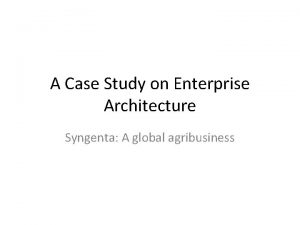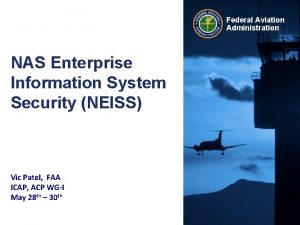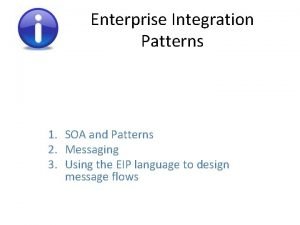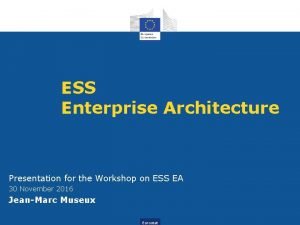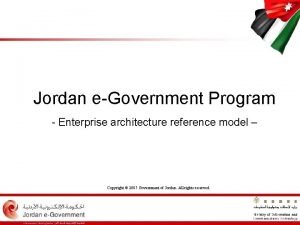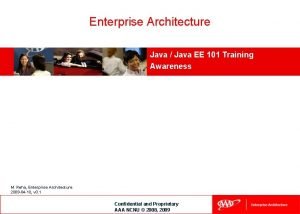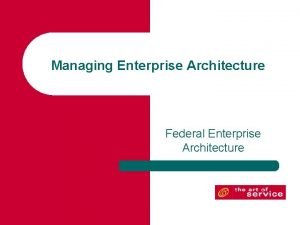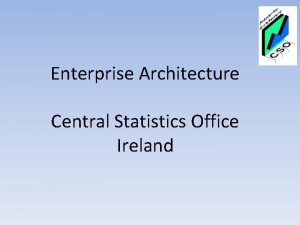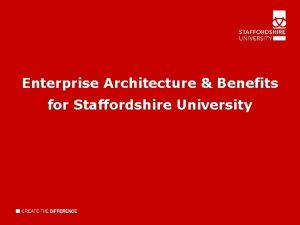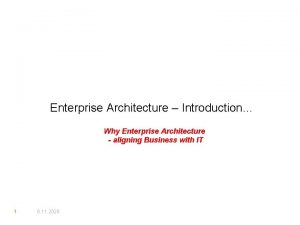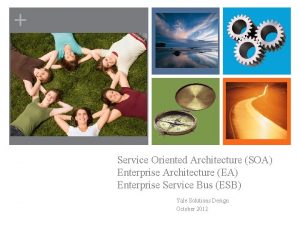What is Enterprise Architecture Enterprise Architecture EA is







- Slides: 7

What is Enterprise Architecture? Enterprise Architecture (EA) is a blueprint for improving, reengineering, and integrating best practice capabilities into programmatic and system solutions for emerging business needs. More specifically, it is a framework which outlines processes, tools, techniques, and their relationships to determine current and future needs across the enterprise to meet tactical and strategic objectives.

HRM EA can: • Help manage information technology (IT) investments; • Serve as a common lexicon of operational activities, capabilities, system functionality, and operational roles across the human resources community; • Provide an overarching framework for future HRM program development and enhancement; • Support alignment of IT with business objectives; • Support acquisition processes; • Foster interoperability among HRM, other federal agencies, and business partner systems; • Serve as a Capstone Architectural Framework for all HRM; • Serve as an enabler for conducting and documenting Continuous Process Improvements and Lean Six Sigma efforts across the HRM Core Business Mission.

Information Flow Boundaryless Information Flow achieved through global interoperability in a secure, reliable and timely manner “Boundaryless does not mean there are no boundaries – it means that boundaries are permeable to enable business. ”

The Zachman Framework What? How? Where? Who? When? Why? Data Function Network People Time Motivation Planner’s Viewpoint Validated Approved statement Validated Architecture principles of architecture principles work Business principles Contextual Business Correlation of. Organization organization Business goals functions and function structure roles and model Owner’s Viewpoint Data model Business baseline version 1 Data objectives managem’t Gap analysis results Business processes Conceptual view Business architecture version 1 processes services Designer’s Technology architecture version 1 0. 2 Common application Data dissemination services Technical view baseline version Application user location Data Application lifecycle Viewpoint Target data Target architecture application version architecture information Technology architecture 0. 3 view interop. view Applications Data Applications lifecycleinteroperability view information Technical Data view security architecture view version 1 view Logical Builder’s Viewpoint Physical Constraints Technical on requiretechnology ments architecture Technology architecture version 0. 4 Technology architecture version 0. 1 Gap analysis results Sub-contractor’s Viewpoint Scope Enterprise Models Systems Models Technology Models Detailed Representations Out-of-context Actual Systems Functioning Enterprise TOGAF - The Continuing Story Refined Business principles goals & drivers 4

Architecture Development Cycle (ADM Cycle) n The Open Group Architecture Forum(TOGAF) Start with a foundation architecture n Follow the phases of the ADM n Results in n an organization-specific architecture n more reusable building block assets in the Enterprise Continuum n Each iteration becomes easier and has more reusable building blocks to use n Every phase is validated against and validates the current requirements of the business


The position of IT Architects How do I know what I want, when I don’t know what you can do for me We know solutions to every problem? What’s your problem? TOGAF - The Continuing Story 7


